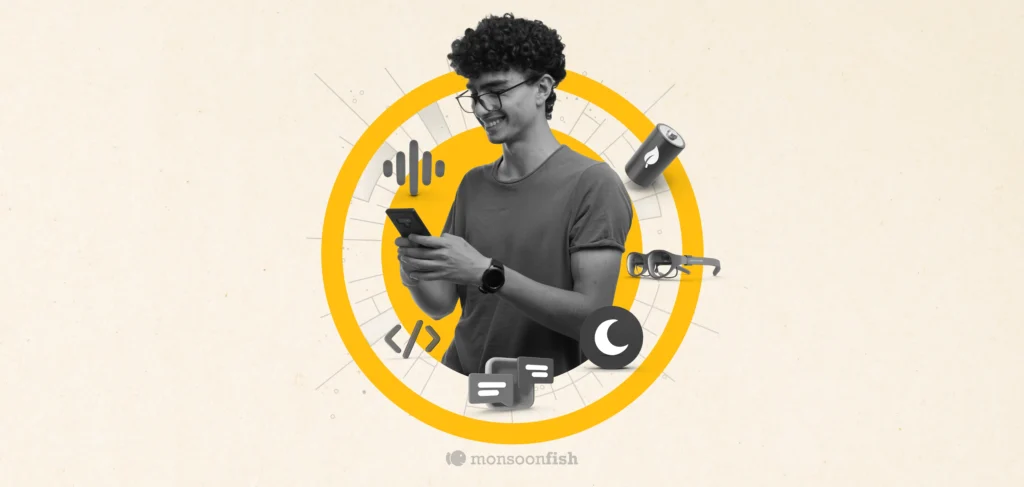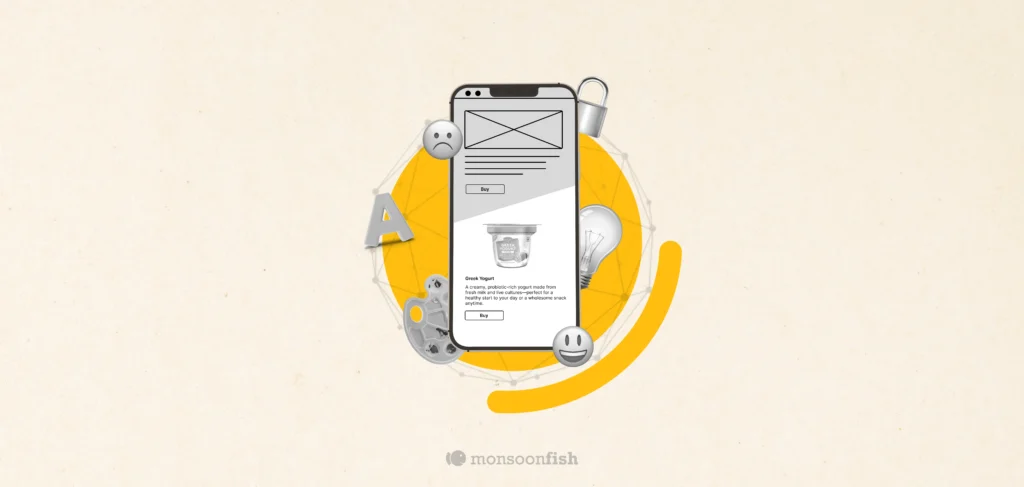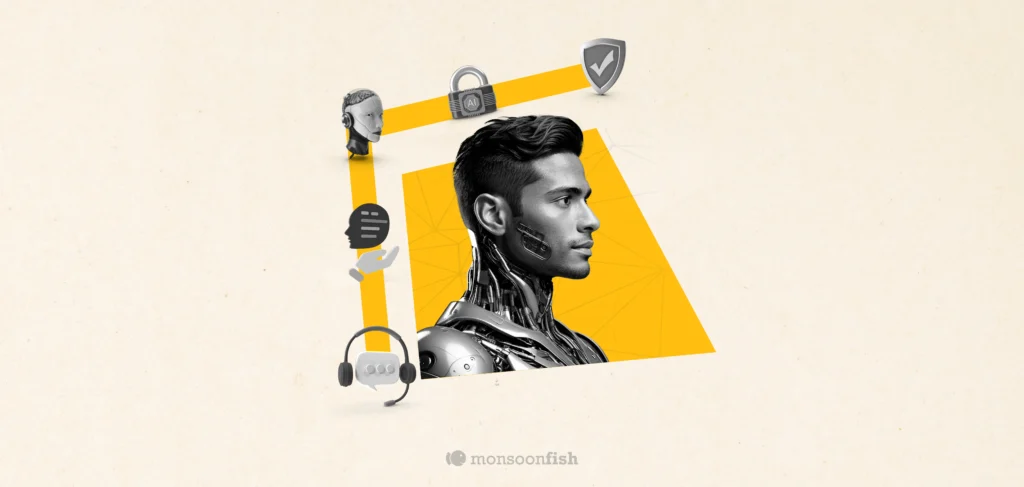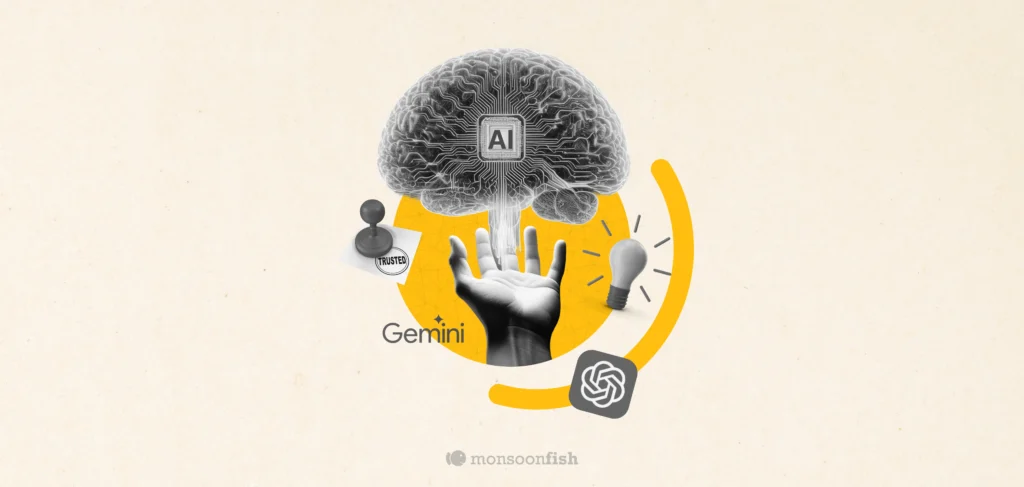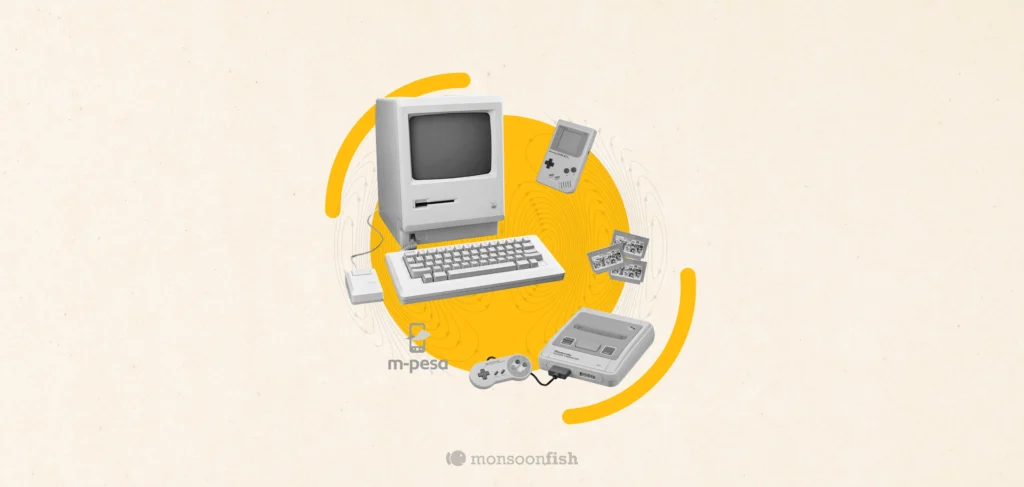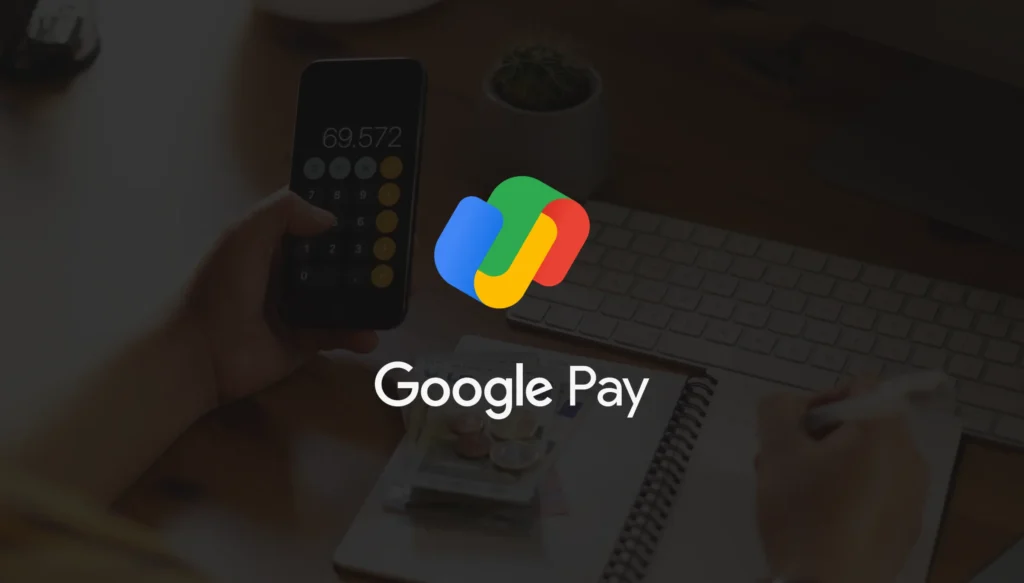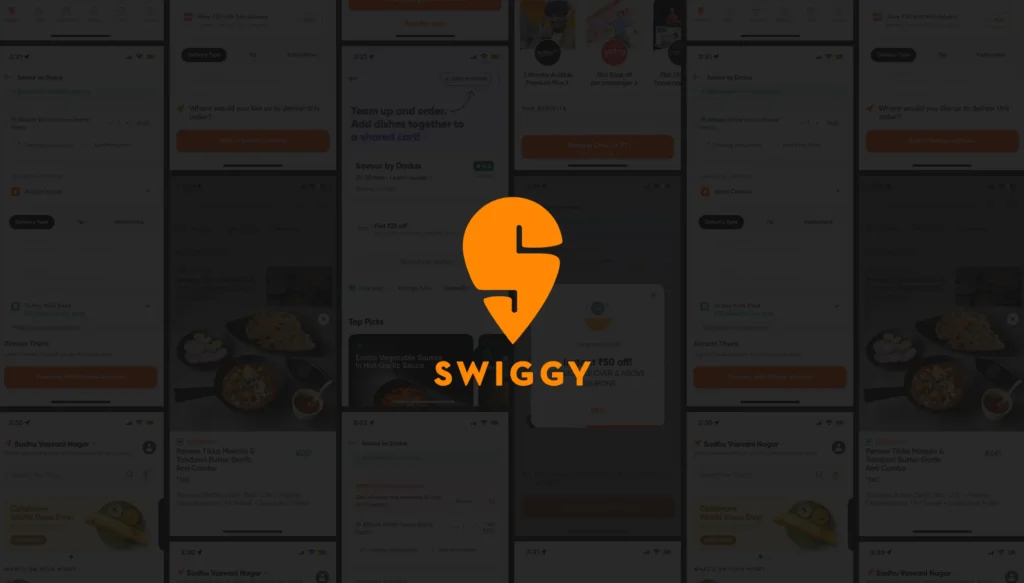What is UX Design and Why it Matters?
UX design adapts, playing a crucial role in enhancing user engagement and satisfaction. By putting your users at the center, you can leverage UX design to drive solutions that resonate, fostering customer retention and boosting conversion rates.
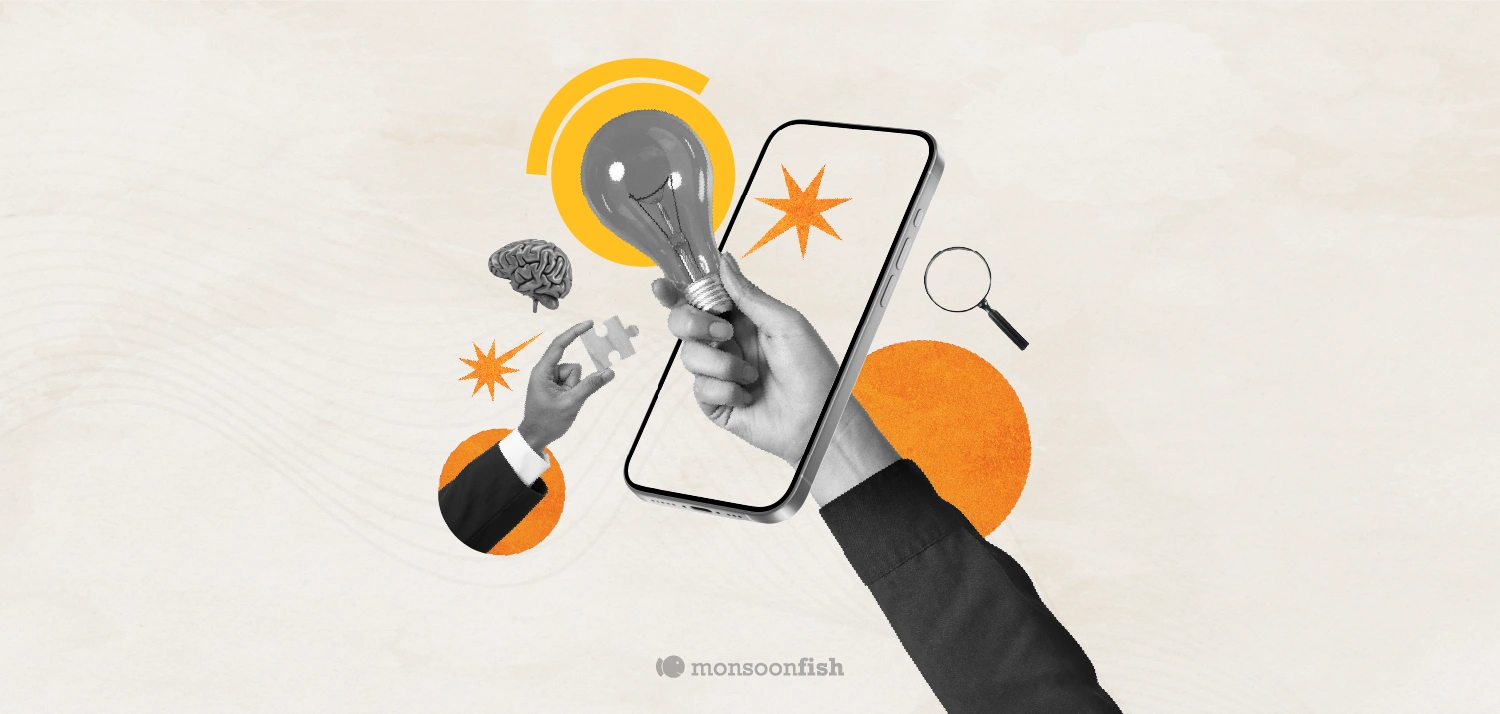
CONTENTS
Understanding What is UX DesignUX Design is Not Just UI Design: Know the DifferencesWhat to look for in a UX Designer or a UX Design Agency for Your ProductImpact of an Expert UX Designer in the UX Design ProcessOur UX Design Process: Exploring the PhasesWhy You should Invest in UX DesignImpact of Efficient UX Design Implementation on Products Across DomainsPractical Tips for Brands to Empower Your Product with UX DesignSocial Share
Businesses strive to stand out and succeed in a crowded online space, making User Experience (UX) design a critical element. So, what is UX design?
It goes beyond mere aesthetics; it’s a strategic approach shaping how your users interact with your digital product. The term encompasses the intricate process of creating meaningful, user-friendly experiences that profoundly influence business success. As technology evolves and user behaviors shift, UX design adapts, playing a crucial role in enhancing user engagement and satisfaction. By putting your users at the center, you can leverage UX design to drive solutions that resonate, fostering customer retention and boosting conversion rates. So, understanding “what is UX design” is understanding the core of successful, user-centric digital experiences.
Understanding What is UX Design
At its core, UX design, or User Experience design, is the art and science of crafting digital interactions that leave a lasting impression. The significance of UX design lies in its ability to enhance user experience by meticulously considering every aspect of the user’s journey. It goes beyond aesthetics, delving into the functional and emotional aspects of design.
Expert UX designers focus on knowing how your users behave, what they prefer, and where they face challenges. Their goal is to create interfaces that connect with your users, making every interaction a user-friendly and seamless experience. UX design is all about prioritizing the user, crafting digital spaces where every click, swipe, or tap serves a meaningful and enjoyable purpose.
UX Design is Not Just UI Design: Know the Differences
Understanding the difference between user experience (UX) and user interface (UI) is important. While UI design focuses on the visual components and interactions that users encounter, UX design looks deeper into the complete experience, including usability, accessibility, and emotional resonance.
“The most important thing to keep in mind when designing a product is to make sure it is both useful and intuitive. If the app is not useful, it has no additional value and no one has any reason to use it.”
– Geetesh Nandanwar, UX Lead, Monsoonfish
Imagine a potential customer lands on your website, eager to buy your product. But instead of a smooth journey, they’re met with unnecessary pop-ups, unclear navigation, and a confusing checkout process. Frustrated and unable to find what they need, they click away, never to be seen again. This, unfortunately, is the reality for many businesses with poor UX design. A staggering 88% of users abandon websites following a negative experience. This emphasizes the importance of prioritizing user needs and providing seamless, intuitive experiences.
Take, for example, the success of Airbnb. Apart from its elegant interface, Airbnb’s UX design ensures a smooth trip from booking to post-stay, encouraging trust and satisfaction. By defining these contrasts, it becomes clear that UX design is more than just aesthetics; it is about creating memorable and meaningful user experiences that last long after the initial engagement.
What to look for in a UX Designer or a UX Design Agency for Your Product
A wide range of designers with varied backgrounds and skill sets work in the immensely broad field of UX design. Apart from possessing strong UX design abilities, UX designers are distinguished by numerous other qualities that emphasize their significance in a design team or organization.
We’ll highlight a few abilities that you must look out for in a UX designer for your product or service:
- Interpersonal, Collaborative, and Communication Skills: Effective collaboration and communication are essential for transforming concepts into cohesive designs. The ability to work well with others, express ideas clearly, and actively listen leads to better teamwork and more successful design outcomes.
- Empathy: Understanding user perspectives is key to developing more intuitive and user-centric experiences. By empathizing with users, designers can create products that truly resonate with and cater to their needs and preferences.
- Curiosity and Continuous Learning: In a rapidly evolving field, maintaining a curious mindset and a commitment to ongoing learning is crucial for staying updated with industry trends. Embracing curiosity fosters creativity and innovation, while continuous learning ensures that designers remain at the forefront of new developments in the field.
- Critical Thinking: The capacity to analyze and evaluate design decisions is vital for creating solutions that effectively address both user and business requirements. Critical thinking enables designers to make informed choices that result in impactful and successful design solutions.
- Wireframing and Prototyping: Proficiency in translating concepts into tangible prototypes is vital for designing and refining user interfaces. Through wireframing and prototyping, designers can visually represent their ideas, gather feedback, and iterate on designs to achieve optimal user experiences.
- UX Writing: Crafting clear and concise content significantly contributes to the overall user experience. Well-crafted UX writing enhances usability, guides users through interfaces, and ensures that the language used in the design aligns with the product’s branding and user expectations.
- Business Sense: Comprehending business goals and strategies facilitates the alignment of design decisions with organizational objectives, demonstrating the broader impact of UX design within a company.
Impact of an Expert UX Designer in the UX Design Process
The primary responsibility of UX designers is to comprehend user needs and behaviors, translating these insights into designs that seamlessly connect with them and help fulfill their goals.
UX designers ensure that every element of your product serves a purpose and enhances its usability. Their impact is huge, influencing the overall user satisfaction and success of your product or service.
“Satisfactory experience sometimes works but ‘wowing’ the users always works the best! So make sure your product’s user experience fulfills this.”
– Shashikant Narwade, UX Lead, Monsoonfish
An adept and professional UX designer or design agency like Monsoonfish, navigates the ever-evolving landscape of design methodologies, emerging technologies, and user expectations, thus bringing fresh perspectives and tailored design solutions for your product. Their continuous learning and adaptation contribute significantly to the success of their UX design process.
Our UX Design Process: Exploring the Phases
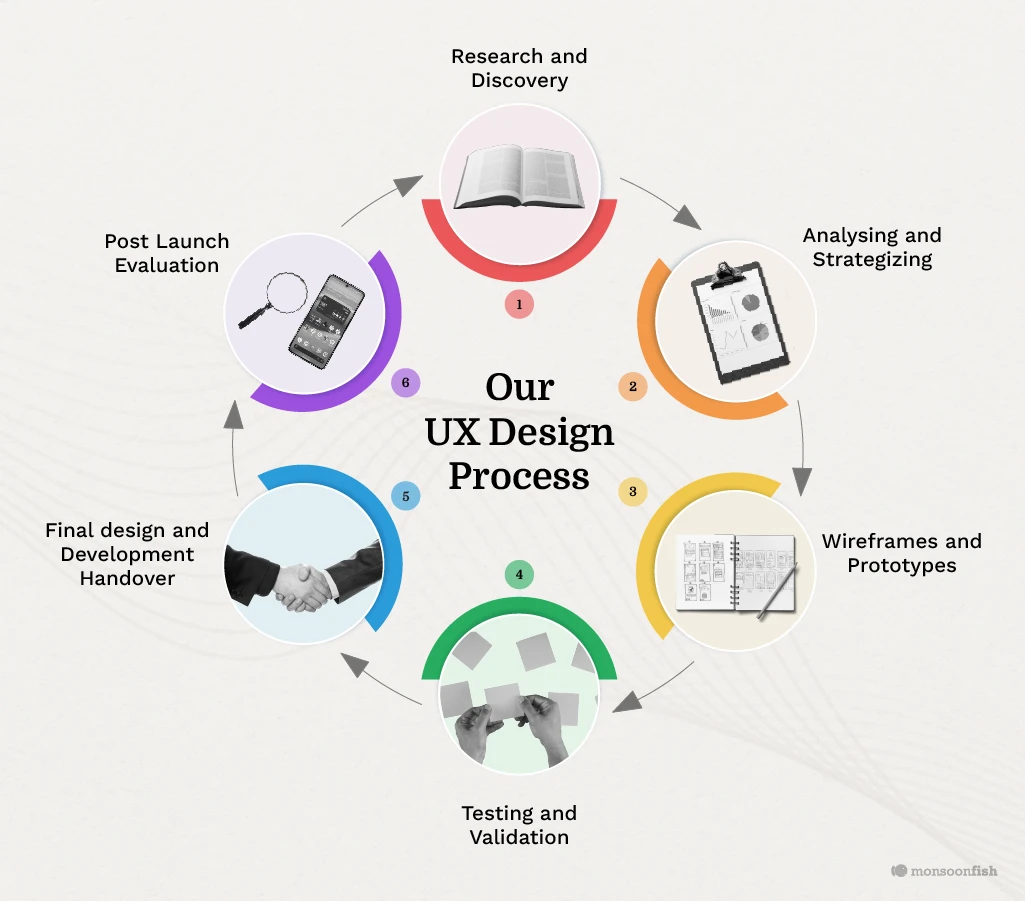
From ideas to implementation, our UX design process follows a systematic approach, ensuring that every step aligns with the ultimate goal of crafting user-friendly and engaging digital interfaces.
- Research and Discovery: We systematically study target users and their requirements as part of our research process, adding realistic contexts and insights to the UX design process. This research enables us to provide efficient and contextual design solutions for the product by precisely understanding what users are seeking.
- Analyzing and Strategizing: In our analysis, we delve deeply into user behavior, gathering essential data to offer actionable, data-driven insights that reflect the users’ voices and align with your business or product objectives. This process helps establish the next steps for your product’s UX design process.
- Wireframes and Prototypes: Partnering closely with the design team, we work to transform business requirements into practical wireframes and rapid prototypes, aiming to achieve a seamless user experience. Then, these wireframes and product mock-ups undergo testing, allowing us to gather early insights and make any necessary adjustments.
- Testing and Validation: Testing and validation reveal the real-world application of design wireframes with actual end users. This step is crucial for gaining a profound understanding of user behavior, pinpointing potential issues, and validating prototypes to ensure a seamless user experience.
- Final Design and Development Handover: This is a very crucial step that involves delivering a comprehensive set of design assets and specifications to the development team. Clear communication and detailed documentation with the development team ensures that the envisioned user experience is meticulously translated and developed into the final product. This critical juncture marks the transition from conceptualization to implementation, with the end goal of delivering an efficient and impactful digital experience.
- Post-Launch Evaluation: Post-launch, we continuously monitor and assess feedback from users to guide data-driven enhancement decisions. We evaluate KPIs that measure the product’s success against predetermined goals, such as user engagement, conversion rates, and retention. “Conversion rate and user experience go hand-in-hand.” – Rohan Baruah, Head of Operations, Monsoonfish.
Based on data-driven insights and user feedback, modifications to the design adapt the product to changing user needs and market expectations, highlighting the ever-evolving nature of UX design beyond the initial launch.
Why You should Invest in UX Design
While the rise of UX design is celebrated, many misunderstand its true impact. It’s not just about creating pretty interfaces; it’s a holistic approach that considers accessibility, functionality, and overall user satisfaction. This user-centric focus offers a wealth of benefits for your brand, user engagement, revenue, and user – product interaction.
Here are some compelling reasons that highlight the importance of investing in UX:
- Enhancing User Satisfaction: UX design focuses on creating intuitive, user-friendly interfaces that make interactions with products seamless and enjoyable. By prioritizing your users needs and preferences and helping them fulfill their goals, you can significantly enhance user satisfaction.
- Driving Business Success: A well-designed user experience can directly impact business outcomes by enhancing conversion rates, sales, and customer loyalty. Businesses can also differentiate themselves from competitors, attract more customers, and ultimately drive higher revenues and profits.
- Reducing Development Costs: Investing in UX design upfront can help you to identify and address usability issues early in the development process, reducing the need for costly revisions and fixes later on. By conducting user research, prototyping, and testing, you can streamline the development process and allocate resources more efficiently.
- Boosting Brand Perception: A positive user experience can significantly enhance your brand perception and customer trust. When users have a smooth and enjoyable experience interacting with your product or service, they are more likely to perceive your brand positively and develop strong brand loyalty over time.
- Catering to Mobile Users: With the increasing prevalence of mobile devices, optimizing the user experience for mobile users is essential. Investing in responsive design and mobile-friendly interfaces ensures that users can access your products or services seamlessly across different devices, leading to higher engagement and satisfaction.
- Adapting to User Behaviors: UX design involves understanding user behaviors, preferences, and needs through research and analysis. By staying accustomed to evolving user trends and behaviors, businesses can adapt their products or services accordingly, ensuring continued relevance and usability in a rapidly changing market landscape.
- ROI: Ultimately, investing in UX design yields a strong return on investment. Studies have shown that every dollar spent on UX design can result in a return of up to $100, highlighting the significant impact of UX on business success and profitability. By prioritizing user experience, businesses can achieve long-term growth and sustainability.
Impact of Efficient UX Design Implementation on Products Across Domains
We don’t just build products, we craft experiences. Our expertise lies in crafting efficient UX designs that are loaded with features your users seek, from intuitive navigation to seamless flows and engaging visuals. We understand that a smooth user journey is the foundation of success, and we ensure your product feels effortless and error-free. But we don’t stop there. We leverage data and human-centered design systems to scale your venture and drive growth, transforming your digital product into a powerful growth engine.
By implementing effective UX design across different domains, we’re not just improving user experiences, we’re empowering brands to become leaders in the ever-evolving digital world.
At Monsoonfish, we’ve engaged in diverse projects spanning Healthcare, Cybersecurity, Travel and Hospitality, Edtech, IoT, and Non-Profit sectors.
Let’s explore the impact of some of the initiatives we’ve undertaken:
- L&T Sufin – We undertook the redesign of L&T Sufin, one of India’s largest marketplace platforms, focusing on creating a seamless ordering process for both buyers and sellers. Tailoring the user experience to individual profiles, we eliminated the hassle of repetitive logins, and the integration of push notifications for order tracking, RFQs, quotations, and payments enhanced overall engagement. Our design strategy prioritized customer experience by providing constant access to support through coach screens introducing new features. This digital transformation not only expanded brand reach but also significantly reduced errors, enabling sellers in the B2B sector to gain recognition through increased platform conversions and a more streamlined procurement process, resulting in a higher conversion rate.
- Aadhaar – With an emphasis on accessibility and responsiveness, our team completed a UI/UX redesign for Aadhaar, the largest biometric system in the world. The revamped website garnered immediate positive feedback with a 12.5% reduction in operating costs for UIDAI, due to its lightweight and modular design. The mobile-friendly interface resulted in over 100 videos praising the site’s user-friendliness and triggered positive social media conversations. The redesign significantly reduced support calls, empowering users to navigate independently. Indian users experienced delight and increased trust due to the improved accessibility. The enhanced design facilitated seamless mobile interactions for a diverse user base, showcasing the impactful influence of our UI/UX skills on the Aadhaar user experience.
- DCM Velocity – Our design team crafted a user experience for DCM Velocity, an AI-powered advisory, aimed at guiding users, particularly sophisticated investors, in making well-informed decisions using technology and machine learning. Our iterative design approach allowed DCM to validate the product idea efficiently. The intervention not only provided a scalable product structure aligned with their vision but also instilled transparency, earning users’ trust. The redesigned website significantly reduced decision-making time for potential investors, instilling confidence and excitement in their choices. The transparent portfolio page provided users with a detailed look into AI decision-making, fostering a sense of control over funds and investments. The dedicated strategy page empowered users to make informed decisions with ease.
Practical Tips for Brands to Empower Your Product with UX Design
To maximize your product’s market impact, it is important to prioritize practical and user-friendly performance. This necessitates an ongoing investment in effective UX design.
Here are some tips to empower your product through UX design:
- User-Centric Approach: Prioritize user needs and preferences throughout the design process, ensuring that every decision enhances the overall user experience and aligns with their expectations.
- Goal-Focused: A design should center on the user accomplishing their tasks. This necessitates removing any secondary or unnecessary features and emphasizing the ones that will actually help. For example, streamlining a checkout form to just the essential fields, removing distractions for faster purchases
- Cross-Disciplinary Collaboration: Encourage collaboration among designers, developers, marketers, and other stakeholders. A diverse team brings varied perspectives and expertise, contributing to a more holistic and well-rounded UX design.
- Stay Updated with Trends: Be updated of evolving design trends, technological advancements, and user behavior. Adapting to current trends ensures that your product remains relevant and resonates with the target audience.
- Accessibility Focus: Design with inclusivity in mind by ensuring that your product is accessible to users of all abilities. Prioritize features like alt text, keyboard navigation, and other accessibility elements to reach a broader audience.
- Data-Driven Decisions: Leverage user analytics and feedback to inform design decisions. Utilize data to identify pain points, track user behavior, and measure the success of design changes, facilitating a more informed and effective UX strategy.
Interested in Getting a Complete UX Design Solution?
Tired of interfaces that frustrate users and fail to deliver on your vision?We get it. At MonsoonFish, we don’t just design interfaces, we unlock the true potential of your product. Our team of dedicated UX experts dives deep to understand your audience, your goals, and your unique challenges. We then craft unique design solutions that are not only visually stunning, but also intuitive, engaging, and drive results.
Ready to captivate your audience and transform your digital presence? Let’s turn your vision into an exceptional user experience. Connect with us today for a free consultation.
